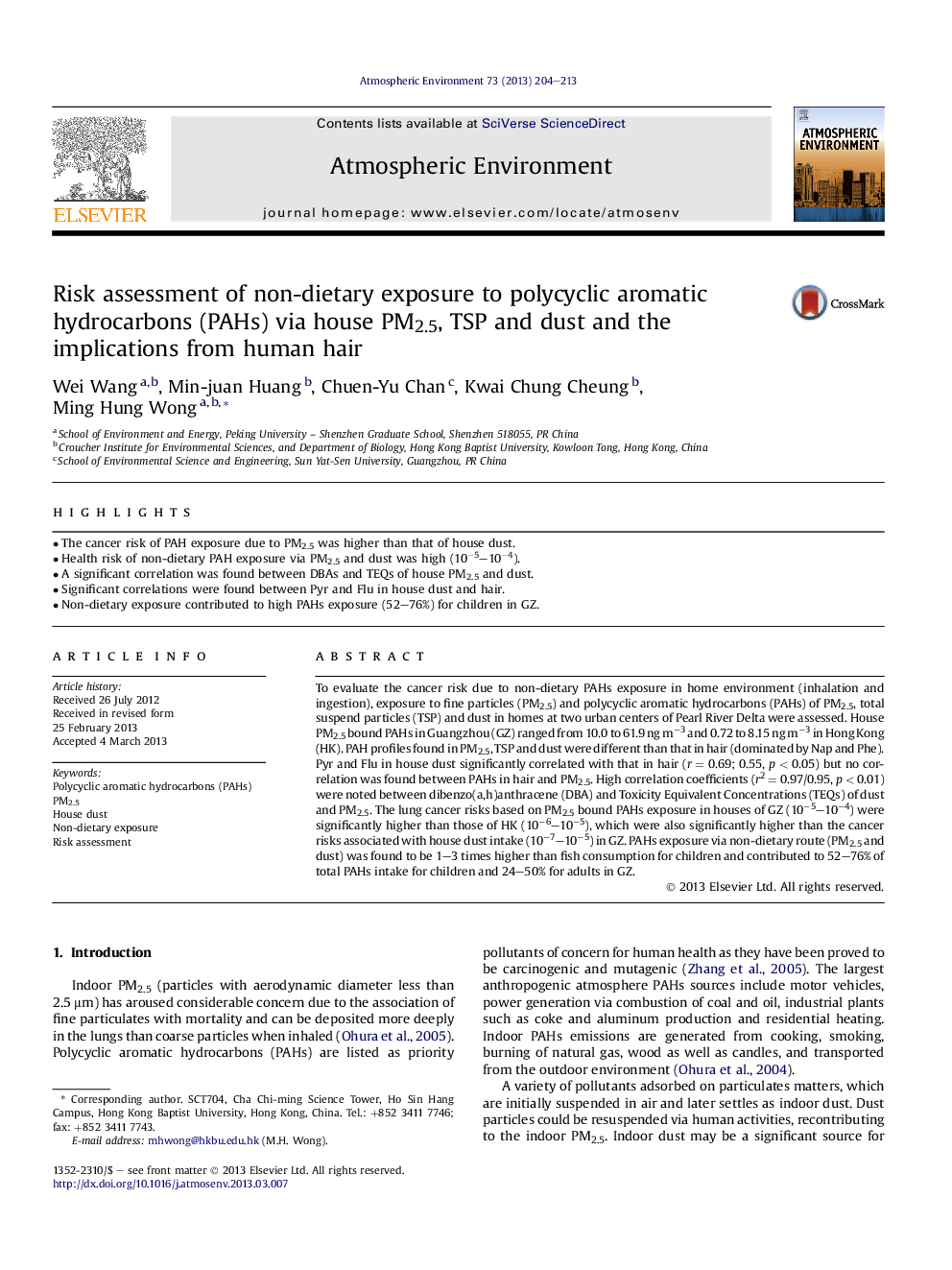| کد مقاله | کد نشریه | سال انتشار | مقاله انگلیسی | نسخه تمام متن |
|---|---|---|---|---|
| 4438237 | 1620398 | 2013 | 10 صفحه PDF | دانلود رایگان |

• The cancer risk of PAH exposure due to PM2.5 was higher than that of house dust.
• Health risk of non-dietary PAH exposure via PM2.5 and dust was high (10−5–10−4).
• A significant correlation was found between DBAs and TEQs of house PM2.5 and dust.
• Significant correlations were found between Pyr and Flu in house dust and hair.
• Non-dietary exposure contributed to high PAHs exposure (52–76%) for children in GZ.
To evaluate the cancer risk due to non-dietary PAHs exposure in home environment (inhalation and ingestion), exposure to fine particles (PM2.5) and polycyclic aromatic hydrocarbons (PAHs) of PM2.5, total suspend particles (TSP) and dust in homes at two urban centers of Pearl River Delta were assessed. House PM2.5 bound PAHs in Guangzhou (GZ) ranged from 10.0 to 61.9 ng m−3 and 0.72 to 8.15 ng m−3 in Hong Kong (HK). PAH profiles found in PM2.5, TSP and dust were different than that in hair (dominated by Nap and Phe). Pyr and Flu in house dust significantly correlated with that in hair (r = 0.69; 0.55, p < 0.05) but no correlation was found between PAHs in hair and PM2.5. High correlation coefficients (r2 = 0.97/0.95, p < 0.01) were noted between dibenzo(a,h)anthracene (DBA) and Toxicity Equivalent Concentrations (TEQs) of dust and PM2.5. The lung cancer risks based on PM2.5 bound PAHs exposure in houses of GZ (10−5–10−4) were significantly higher than those of HK (10−6–10−5), which were also significantly higher than the cancer risks associated with house dust intake (10−7–10−5) in GZ. PAHs exposure via non-dietary route (PM2.5 and dust) was found to be 1–3 times higher than fish consumption for children and contributed to 52–76% of total PAHs intake for children and 24–50% for adults in GZ.
Journal: Atmospheric Environment - Volume 73, July 2013, Pages 204–213